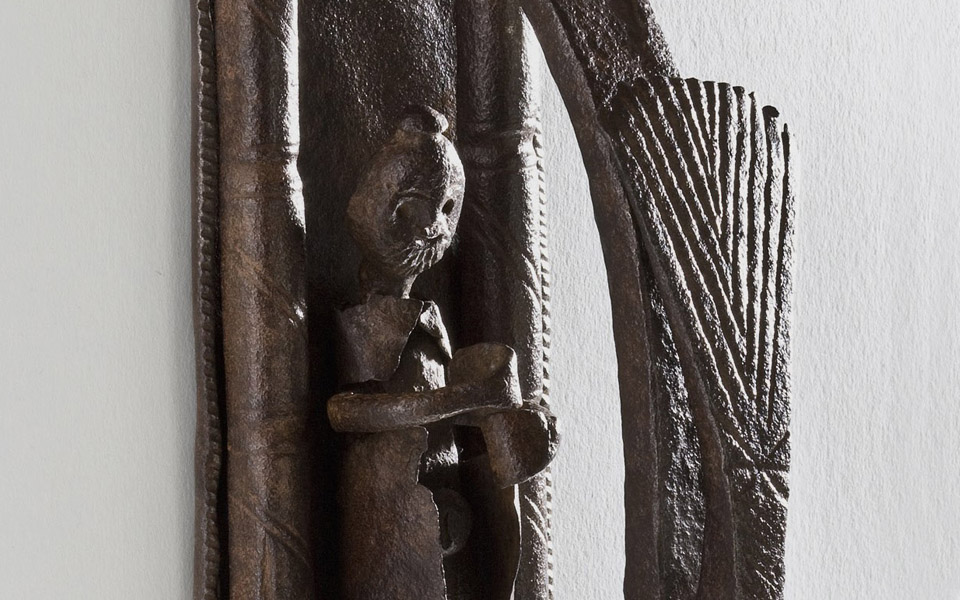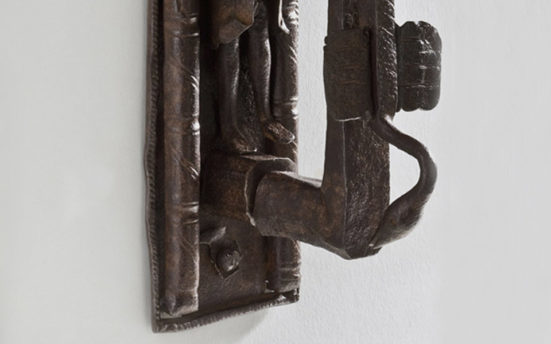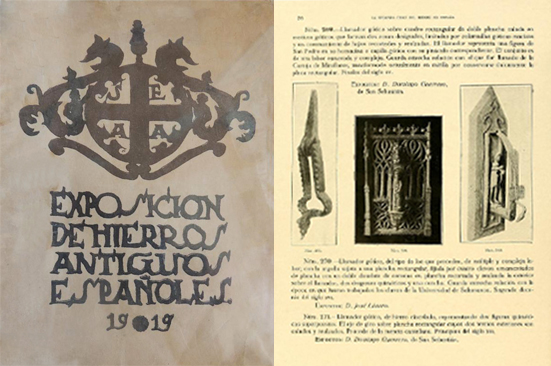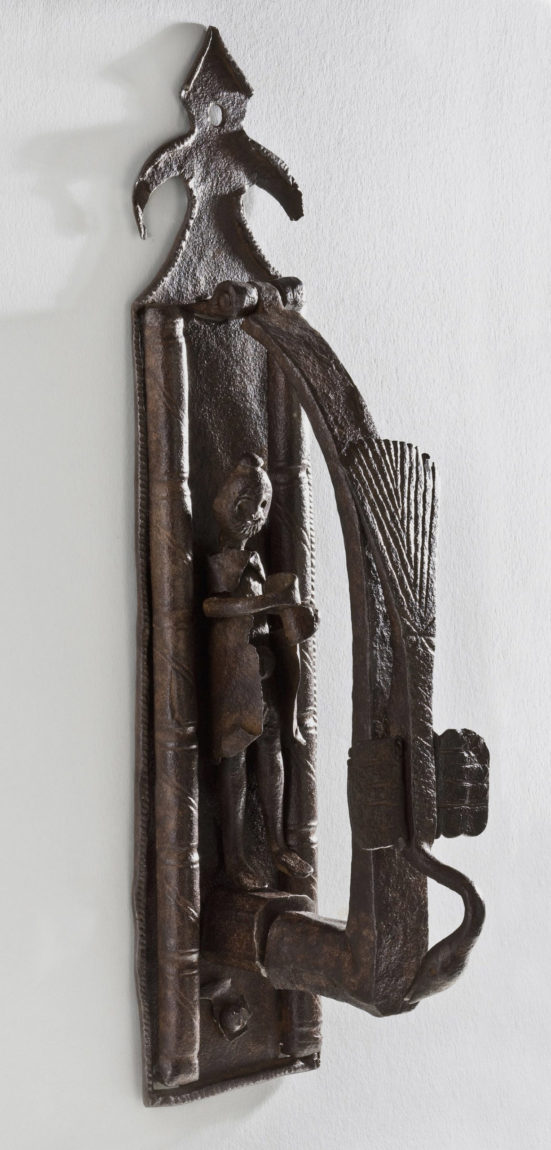
An Unrivalled Doorknocker
This remarkable doorknocker, with its warm and attractive brown patina, is made up of a body in the shape of a hammer and a back plate.
The rectangular back plate, cut-out and knurled on the profile, shows at the top a lily-shaped motif and it’s provided with a pair of symmetrical, repoussé and engraved half-columns, once working as anchoring elements to the door.
The hammer is adorned with a winged dragon, carved in full relief, featuring an engraved snake-shaped body with flat tail, small wings and arched neck.
The iconographic theme of the dragon is widespread in the Christian world, at least since the Romanesque period, in the context of a vitalistic conception of ornamentation, and it is undoubtedly among the protagonists of the Gothic drôlerie. Dragons are anyway recurrent elements in the typical decorative lexicon on locks and doorknockers, often with an apotropaic meaning.

The most interesting element of the piece presented here is, however, the extraordinary wrought iron figure, nailed in the middle of the back plate and standing over the quadrangular knob: the figure depicts a bearded warrior or a pilgrim wearing a mantle, with a peculiarly intriguing aspect, probably once holding a spare or a sword in his hands as a symbol of ward or defence.
Ironworking in Spain had already reached significant levels during the early Middle Ages, due to the Arabic presence introducing new and sophisticated techniques; above all, Spanish blacksmiths drew from the Islamic aesthetic the taste for the minute and refined metalworking.
Doorknockers in the shape of a hammer, like the present piece, were particularly common in the areas of Lerida, Aragón and in all Northern Spain, regions where they were preferred to the ring-shaped models, more popular elsewhere. For this spectacular doorknocker, almost certainly of Aragonese origin, we can nevertheless find only a few comparisons (Museo del Hierro, Oropesa del Mar, inv. 151; Museu Cau Ferrat, Sitges, inv. 31576) which moreover have to be taken only as a generic typological benchmark, since in fact the piece is an absolute unicum.
Beyond its quality and rarity, we must underline that the present piece – something absolutely unusual for a doorknocker – is documented as early as the beginning of the 20th century in one of the most important Spanish collections dedicated to ironwork: the famous collection of Domingo Guerrero from San Sebastián (Basque Country), who contributed with a great nucleus of pieces to the important Exposición de Hierros Antiguos Españoles organized in Madrid in 1919.

Between the end of the nineteenth century and the beginning of the following, as a result of the Industrial Revolution, the fascination for the craftsmanship of past centuries was the reason for the development throughout Europe of some important applied art collections, fundamental inspiring sources for all the twentieth century artists: particularly in Spain, these collections were of enormous importance for leading figures such as Antoni Gaudì, Joan Mirò and Pablo Picasso, and more generally for the development of the Catalan Modernisme.

DOORKNOCKER
Wrought, carved, embossed and engraved iron
Spain (Aragón)
15th century
H.: cm 38, L.: cm 8.2, P.: cm 13.5
Provenance: Coll. Domingo Guerrero, San Sebastián(Basque Country) ; Museo del Hierro, Oropesa del Mar.
THIS WORK IS NO LONGER AVAILABLE
Bibliography: P. M. de Artiñano y Galdácano, Exposición de Hierros Antiguos Españoles, Madrid 1919, n° 268, pagg. 75-76; AA. VV., L’art del ferro. Rusiñol i el col-leccionisme del seu temps, Barcelona 2007, p. 80 n°45.
© 2013 – 2024 cesatiecesati.com | Please do not reproduce without our expressed written consent
Alessandro Cesati, Via San Giovanni sul Muro, 3 – 20121 Milano – P.IVA: IT06833070151